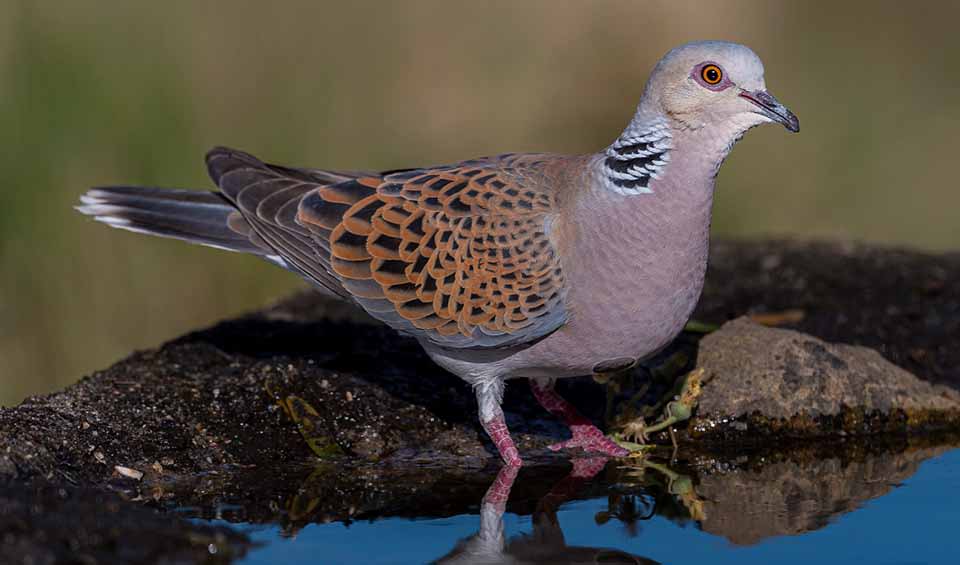Streptopelia – Collared and turtle doves
Turtle doves, in particular, are famous in folklore, poems, and Christmas songs, symbolizing love, peace, and devotion
A group of graceful, soft-voiced pigeons that are widespread across Europe, Asia, and Africa, and in some cases, far beyond their original range. Known for their gentle cooing, slender builds, and the distinctive half-collar marking on the back of the neck found in many species, these birds are familiar sights in woodlands, farmland, gardens, and urban areas alike. Their name comes from Greek: streptos meaning “collar” and peleia meaning “dove.”
One of the most well-known members of this genus is the Eurasian collared dove (Streptopelia decaocto), a pale, elegant bird that has undergone one of the most impressive range expansions of any bird species. Originally native to parts of Asia and southeastern Europe, it has spread rapidly across Europe, into the Middle East, and even North America. It is easily recognized by its pale grey body, pinkish flush on the breast, and a neat black “collar” or crescent on the back of the neck.
Another beloved species is the European turtle dove (Streptopelia turtur), known for its rich, purring song and beautiful plumage—brown with intricate black and white mottling on the wings. Unlike its collared cousin, the turtle dove is migratory, spending summers in Europe and winters in sub-Saharan Africa. It has long been a symbol of love and devotion in art and literature, often associated with loyalty due to its monogamous nature and tender cooing.
What makes Streptopelia doves particularly interesting is their gentle behavior and adaptability. They are seed-eaters, feeding mostly on grains, berries, and small fruits, and often forage on the ground in open areas. Their cooing calls are soft and rhythmic, with each species having its own distinct vocal pattern—often heard long before the bird is seen. Their nests are simple and flimsy, typically built in trees, shrubs, or even on building ledges, where they lay two white eggs.
Species in this genus
European turtle dove
The only long-distance migratory dove in Europe


